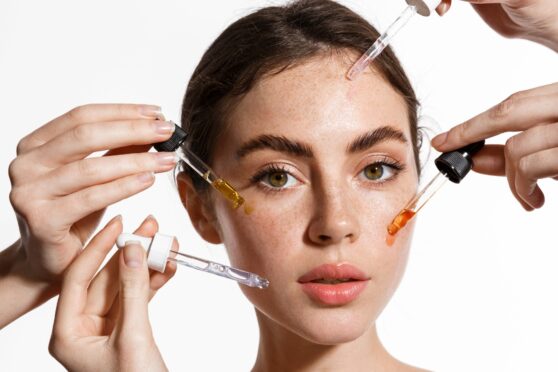
You may already be au fait with the powers of salicylic or love using hyaluronic as part of your daily routine, but with so many different beauty acids on the market, it can be hard to know what ingredients are right for your skin.
Take, for example, phytic acid. Never heard of it before? It’s one of the lesser-known alpha hydroxy acids, usually abbreviated to AHA.
Here, Esther Fieldgrass, founder and creative director of EF Medispa and EF Skin, shares everything you need to know about the skin saviour.
What is phytic acid?
Phytic acid is a substance found in plant-based foods, including legumes, seeds, nuts and grains. Like other AHAs (think glycolic acid and lactic acid) the chemical compound has a range of benefits.
“When it comes to acids in skincare, we are spoilt for choice,” explained Fieldgrass. “But it can be difficult to choose one that will make a visible difference to your skin, and not damage it in the process. Phytic acid, however, is gentle, yet potent.
“The antioxidant has skin-perfecting properties, and boasts fantastic benefits for numerous skin concerns.”
What does it do?
Fieldgrass continued: “When it comes to getting results, stronger formulas are not always the best course of action as they can lead to sensitivity and irritation. That’s where Phytic Acid comes in, as it is a gentle and soothing AHA that exfoliates dead layers of skin without irritation.”
What are the results?
Whether you suffer from acne and large pores, or you want to treat redness and dark marks, using phytic acid could help.
Fieldgrass said: “Its secret power stems from its antioxidant properties. It’s one of the few chemical peels that nourish the skin during exfoliation, helping scavenge free radicals that can cause oxidative stress and ageing.
“Not only does phytic acid brighten and resurface the skin, it’s also a chelator, which means it absorbs certain minerals from the skin, like calcium and iron, which otherwise would contribute to clogged pores and damage.”
When do I use it?
Free from perfume and preservatives, and also vegan-friendly and cruelty-free, Fieldgrass recommends the AlphaScience Phytic TC Serum (£75, efskin.com).
She said: “The unique serum helps keep wrinkles, fine lines and sun spots at bay, while keeping pores clear and stopping acne in its tracks. Plus, with vitamin C and tannic acid, it also neutralises pollutants, and boosts antioxidant activity and collagen synthesis.”

Enjoy the convenience of having The Sunday Post delivered as a digital ePaper straight to your smartphone, tablet or computer.
Subscribe for only £5.49 a month and enjoy all the benefits of the printed paper as a digital replica.
Subscribe